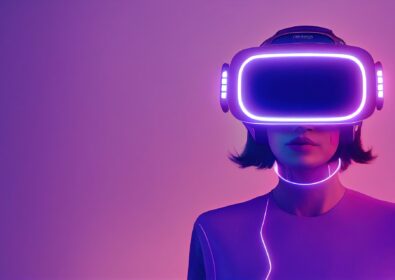Navigating Ethical Considerations in 3D UX Design
By adminDesign, UX
Navigating Ethical Considerations in 3D UX Design

In the realm of 3D User Experience (UX) design, where innovation and immersion collide, ethical considerations take on a profound significance. As technology continues to propel us into new dimensions, it is essential to examine the intricate ethical dilemmas that arise within this dynamic landscape. This blog post offers a researcher’s perspective on the ethical dimensions of 3D UX design, shedding light on the complexities and responsibilities that designers and creators must address to ensure the creation of responsible and immersive experiences.
The Researcher’s Lens on Ethical Complexities:
From the vantage point of a researcher, the ethical landscape of 3D UX design extends far beyond surface-level interactions. Delving deeper, we encounter multifaceted challenges that demand nuanced exploration:
User Autonomy and Consent: At the core of ethical 3D design lies the issue of user autonomy and informed consent. As researchers, we grapple with questions about how to empower users to make informed decisions about engaging with immersive experiences and the data they share.
Implicit Bias and Representation: In crafting immersive environments, the choices made by designers can inadvertently perpetuate biases or misrepresentations. Researchers play a crucial role in identifying and mitigating these potential pitfalls to ensure fair and accurate representations.
Long-Term Effects on Society: The impact of 3D interfaces extends beyond the individual level, potentially shaping societal behaviors and norms. Researchers must consider the long-term implications of their designs on communities, relationships, and cultural dynamics.
Insights into Ethical Design Practices:
From a researcher’s perspective, ethical 3D UX design requires a holistic approach that considers not only the immediate user experience but also the broader context and consequences:
Ethical Frameworks and Guidelines: Researchers can contribute by developing and promoting ethical frameworks and guidelines that serve as roadmaps for designers. These frameworks can encompass data privacy, diversity and inclusion, and user empowerment.
Ethical Design Audits: Regularly auditing designs for ethical implications is essential. Researchers can collaborate with designers to assess the potential ethical challenges and propose refinements based on insights from user studies and interdisciplinary perspectives.
Transparency in Design Decisions: Transparency fosters user trust. Researchers can advocate for clear communication of design decisions, data collection practices, and the implications of engaging with 3D interfaces to ensure users are fully informed.
Balancing Innovation and Responsibility:
In the realm of 3D UX design, the synergy between innovation and responsibility lies at the heart of ethical practice:
Interdisciplinary Collaboration: Collaboration between researchers, designers, ethicists, and other stakeholders enriches the dialogue around ethical design. Through diverse perspectives, ethical considerations can be thoroughly examined and addressed.
Continual Learning and Adaptation: As researchers, embracing a stance of continual learning is crucial. Stay attuned to evolving ethical challenges and be willing to adapt design practices accordingly to uphold the highest ethical standards.
Conclusion: Guiding the Ethical Odyssey of 3D UX Design:
From a researcher’s perspective, the ethical exploration of 3D UX design presents an odyssey that requires vigilance, empathy, and a commitment to societal well-being. By infusing designs with ethical principles, creators can wield the power of immersive experiences to enrich lives while safeguarding user rights and dignity. As we journey into uncharted 3D realms, the ethical compass we wield as researchers guides us to craft designs that reflect not only our technological prowess but also our ethical responsibility to shape a better digital future.
Related Posts
Nov 09, 2022 UX
Why the future of User Experience is 3D
Recent Comments
Archives
Service Unavailable
The server is temporarily unable to service your request due to maintenance downtime or capacity problems. Please try again later.
Additionally, a 503 Service Unavailable error was encountered while trying to use an ErrorDocument to handle the request.

